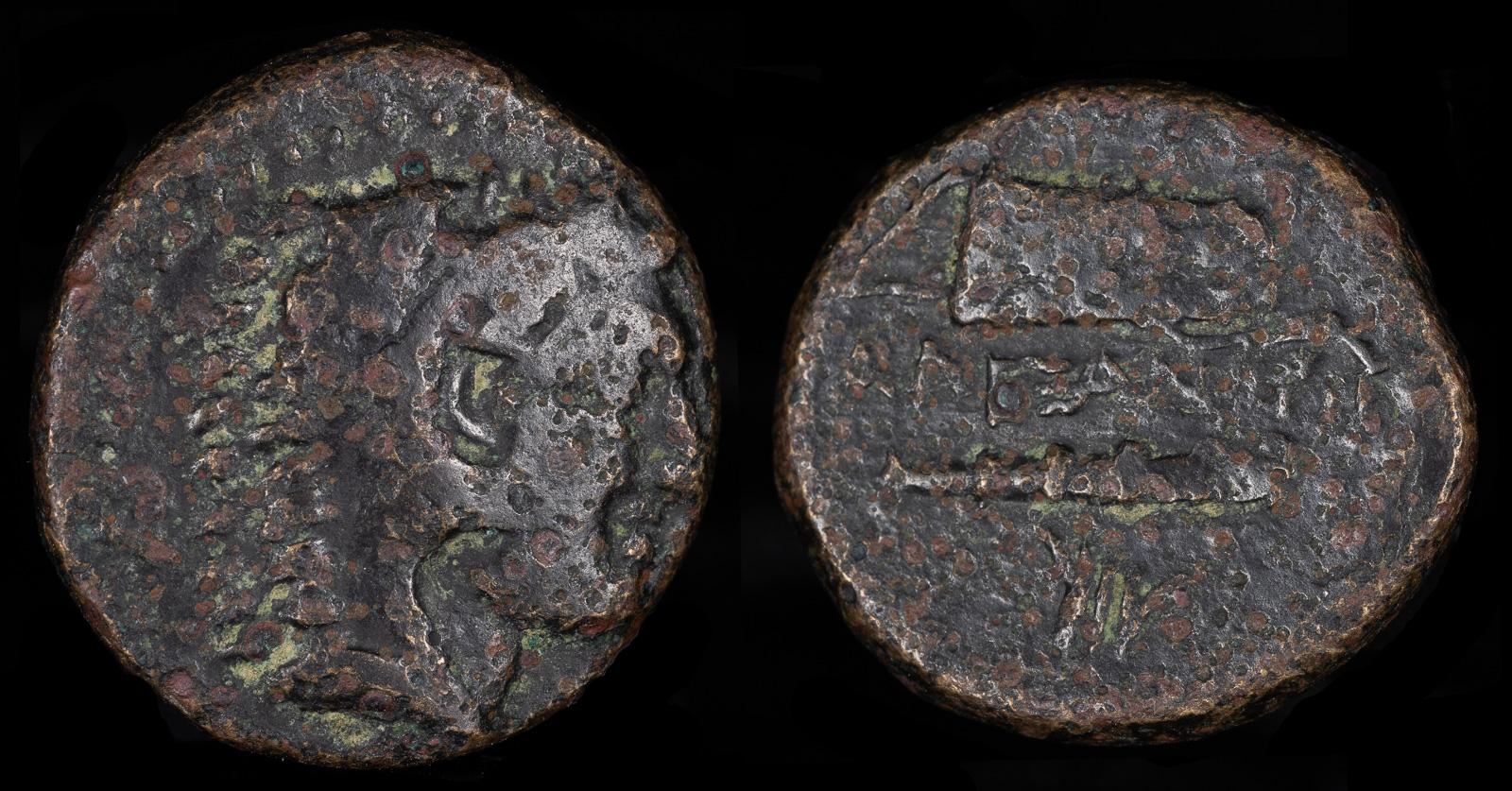
CYPRUS, Soloi. Pasikrates (Stasikrates)
Circa 330s-310s BCE
Æ Unit 18.5mm, 7.00 g, 9h
In the name and types of Alexander III of Macedon. Head of Herakles right, wearing lion skin
Bow-in-bowcase and club; prow upward below.
Zapiti & Michaelidou 26; Troxell, Alexanders 29; Price 3099
In a bit of odd history, the city of Soloi was named after the Greek statesman Solon, who visited the island and planned the city. This attribution isn’t accepted by all scholars, however.
Despite its small size, Soloi had a large impact on the adventures of Alexander the Great, since several of its citizens accompanied him and rose in the ranks. Two of Alexander’s generals, Stasanor and Stasander, came from Soloi. Nikokles, son of the king Pasikrates, also joined them. Presumably the city was among the Cypriot cities who assisted Alexander in the Siege of Tyre.
Today, the site is well known for its Roman era floor mosaic of a swan.
The major cities in Cyprus – Salamis under Pnytagoras, Kourion, Paphos, and Soloi – rebel against Artaxerxes III Okhos. He sends Idreios along with the Athenian Phokion to quell the rebellion.
Amathos under Androkles, Salamis, and Soloi in Cyprus submit to Alexander the Great after his victory over the Persian Empire at the Battle of Issos. Chios also comes under Macedon.
Nikokreon of Salamis and Pasikrates of Soloi pay homage to Alexander III in Phoenicia and take part in games.
Eunostos of Soloi marries Eirene, daughter of Ptolemy I Soter and Thais.
Demetrios Poliorketes captures Cyprus from Ptolemy I Soter and Menelaus – including Salamis, Kourion, Soloi, Paphos, and Amathos.
Amathos, Soloi, and Salamis become part of the Ptolemaic Kingdom of Egypt under Ptolemy I Soter. They are incorporated into the Ptolemaic administrative system, as Cyprus becomes a strategic naval and commercial hub for the Ptolemies.